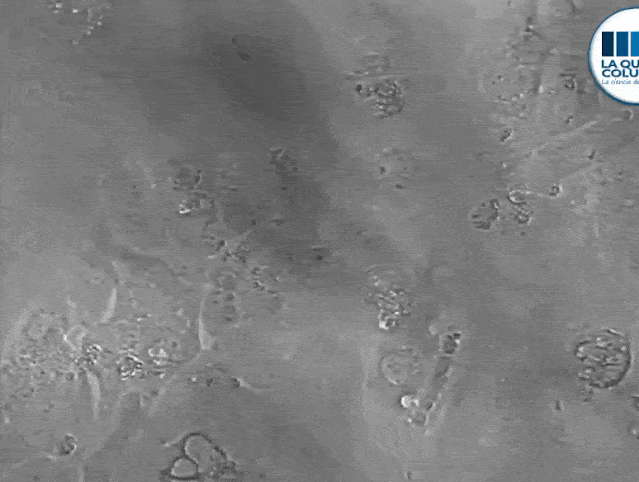Effect of graphene oxide on myocytes when stimulated by external electromagnetic waves
January 06, 2022When excited by external electromagnetic fields, such as waves emitted by 5G antennas, graphene oxide causes changes in heart rate.
As La Quinta Columna has been explaining for quite some time now, this would be one of the main reasons why cases of arrhythmias, heart attacks, and strokes have increased.
Ricardo Delgado: Let's watch this video, José Luis. It's very short, although very illustrative because it's related to what we've talked about several times. Cardiac cells. Myocytes. I recall that they're from rats, specifically. Their cells have been impregnated with this material. With graphene oxide. You're going to see what happens when it's excited with microwaves. Externally.
See what happens to these cells. Here, you're looking at the heartbeat. Now, there's an excitation of the material. And notice how the cardiac pattern changes. It triggers an arrhythmia, right?
Dr. Sevillano: It changes the discharge rhythm. Those cells spontaneously depolarize at a particular rate or between 60 and 100. Or so. But when something excites them... Bang, bang! They discharge, they depolarize faster.
In this case, graphene has "stuck" to them. And what does graphene do to them? It polarizes them faster. And it happens at the moment graphene is excited, not before.
Graphene was on the heart wall, but as long as it's not excited from the outside, the graphene stuck to the heart wall is inert. It does nothing. That until a signal that comes from outside excites it. That means that that signal makes graphene absorb energy. And the absorbed energy is sent to the wall of the myocyte. And when it's sent to the wall, the myocytes depolarize. Calcium and potassium channels, among others, are opened. Everything that regulates the membrane potential difference on one side and the other. This is electrophysiology.
But neither Carvallo nor the other doctor knows about all this. What are they going to know? And what for? They aren't interested. They aren't interested in these phenomena. They're interested in is what's most simple. Don't make them think. Poor souls! They have already studied enough, for six years and more in doctorates, if they have one, etc... They have studied enough. Or rather: memorized. Because I don't know to what extent they have used their brains when looking at the panorama.
Ricardo Delgado: Nojasafe here is telling us: "That's why they said that cancers were going to increase in 2022." "Because even if you're not injected graphene, that bandwidth increase to 26 GHz in mid-2022 is going to give most of us cancer." Sure thing.
Dr. Sevillano: It's a possibility. Keep in mind that the material is excitable. If it gets excited, it creates problems with free radicals, which are carcinogens. Graphene, per se, is just a mediator of the damage. The problem is that this generates altered molecules. It destroys them. It creates defects in the biomolecules that are the ones that, in the end, trigger problems in the biology of the cell. In the end, they degenerate anything. But they say that nothing happens, eh?
Ricardo Delgado: Someone may say...
Dr. Sevillano: Sorry. Go ahead.
Ricardo Delgado: José Luis, someone may say: "Well, but graphene is in the heart. It's been put there." The thing is that, once inside the body, graphene goes to the heart. Because that's where the highest electrical activity is found. Remember that it's a superconductor. And it's going to have affinity in areas where there's greater electrical conductivity. Affinity for electromagnetic fields.
Dr. Sevillano: The heart has much more capacity and energetic potential than the brain. Curious. From the point of view of the generation of biological electromagnetic fields, the heart itself has a field that's two or three hundred times more powerful. The electromagnetic field generated by the heart is greater than that of the brain.
Don't be surprised by what's happening with soccer players and other athletes. Where's the focus of these people's electrical activity? Where is it? In their hearts. That's why the first to fall... The canaries in the coal mine have been, in this case, the footballers. They're have given you the signal to make you say, " Heck!"
Those who work (the heart) the hardest fall. What's going on? What's happening to these people? Well, they're the first ones that are exciting the material. Most likely.
If you like my articles and the videos you find here and, if you can and feel like it, you can make a small donation. Your support is always more than appreciated.
Follow Orwell City on Telegram. Thank you for reading!
—Orwellito.























0 comments